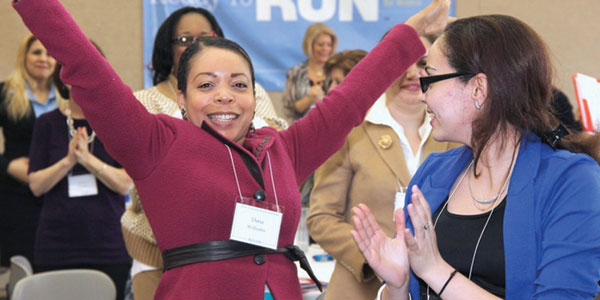
By Tere Siqueira
Even though half of America’s population is female, Rutgers University’s Center for American Women and Politics (CAWP) claims that just over 20 percent of U.S. representatives and 23 percent of U.S. senators are female.
That, however, might soon change.
As multiple news outlets have reported recently, a record 251 women are running for seats in the House of Representatives in the midterm elections in November. The CAWP reports that three-fourths of the women running are Democrats.
Originally, 476 women filed for candidacy, The New York Times and other news agencies reported. The total was pared down by the party primaries in August. More than half of the Democratic candidates won their primary races, compared to about 40 percent of the Republican candidates.
Statistics also suggest the female candidates are more prepared than their male counterparts – and not just in the House races. Of those running in November for governorships, for example, 59 percent of the female candidates have previous experience as elected officials, compared with just 37 percent of the male candidates. Moreover, 80 percent of the women seeking Senate seats have held an elected office, compared with just 22 percent of the male candidates.
But many of the women seeking election or re-election are facing challenges that their male counterparts are not. According to the candidates interviewed by Lucia Graves for a story published in April online by The Guardian, they face greater challenges raising money, more pressure to be likable and prove they’re qualified, and are more likely to be subjected to harassment and threats, especially if they’re part of a minority group.
Número récord de mujeres candidatas para las elecciones de noviembre
Aunque la mitad de la población de Estados Unidos es femenina, el Centro de Mujeres y Política Estadounidense (CAWP) de la Universidad de Rutgers afirma que sólo un 20 por ciento de los representantes estadounidenses y un 23 por ciento de los senadores estadounidenses son mujeres.
Eso, sin embargo, podría cambiar pronto.
Como múltiples medios de comunicación han informado recientemente, un récord de 251 mujeres se postula para puestos en la Cámara de Representantes en las elecciones de mitad de período de noviembre. El CAWP informa que las tres cuartas partes de las mujeres que se postulan son demócratas.
The New York Times y otros medios de comunicación informaron que originalmente 476 mujeres se presentaron a la candidatura. En agosto el total fue reducido por las elecciones primarias de cada partido. Más de la mitad de las candidatas demócratas ganaron las elecciones primarias, en comparación con el 40 por ciento de las candidatas republicanas.
Las estadísticas también sugieren que las candidatas están más preparadas que sus competidores masculinos y no sólo en las elecciones de la Cámara. En noviembre de los que se postularon para gobernadores, el 59 por ciento de las candidatas tienen experiencia previa como funcionarias electas, en comparación con sólo el 37 por ciento de los candidatos masculinos. Además, el 80 por ciento de las mujeres que buscan puestos en el Senado han ocupado un cargo electo, en comparación con solo el 22 por ciento de los candidatos varones.
Pero muchas de las mujeres que buscan la elección o la reelección enfrentan desafíos que los hombres no enfrentan. Según las candidatas entrevistados por Lucía Graves para una historia publicada en línea por The Guardian en abril, enfrentan mayores desafíos para recaudar dinero, más presión para ser agradables y demostrar que están calificadas. Adicionalmente son más propensas a ser acosadas y amenazadas, especialmente si son parte de un grupo minoritario.










